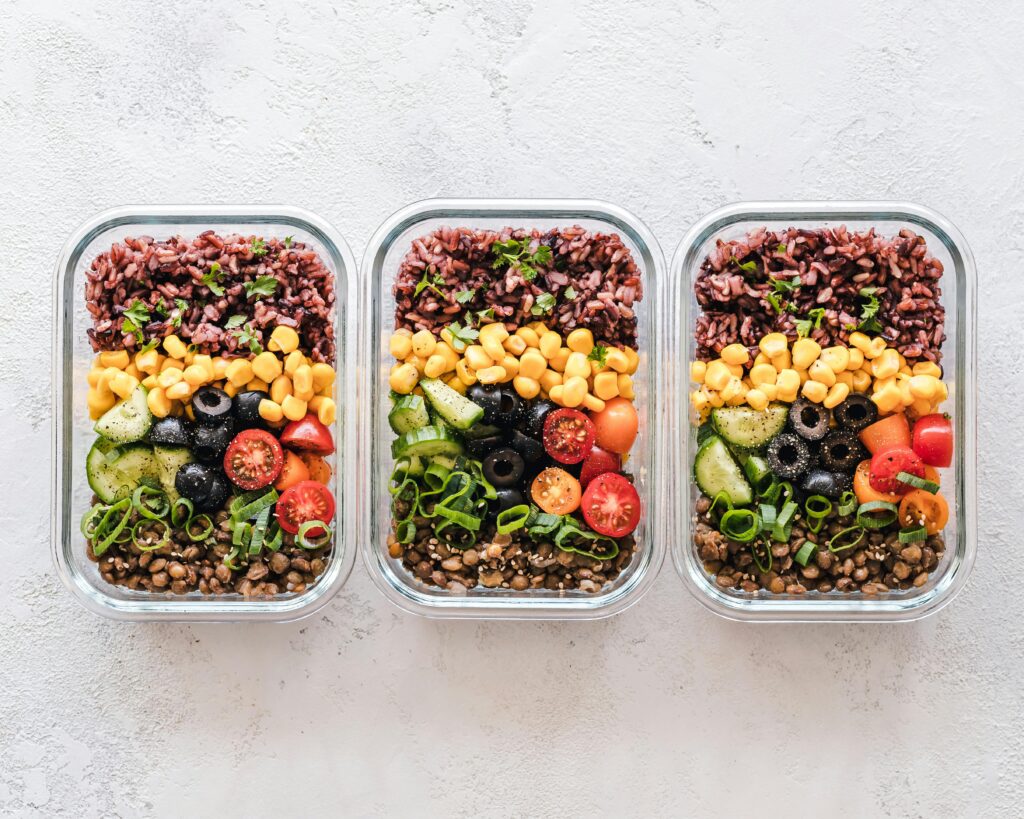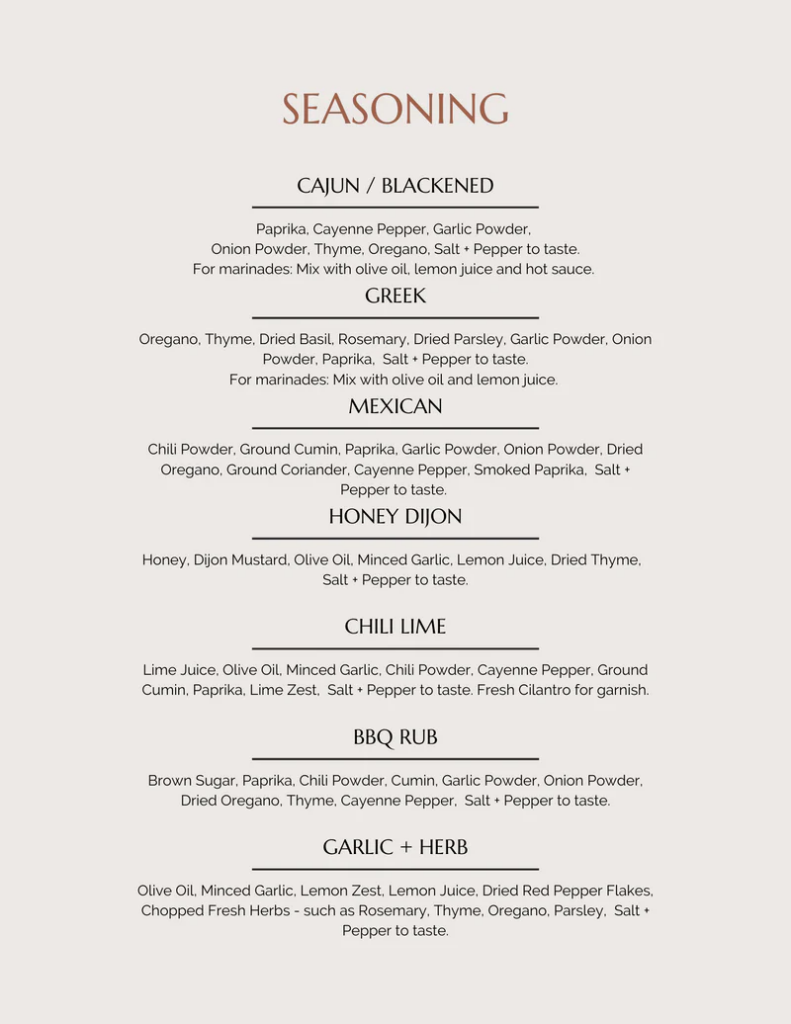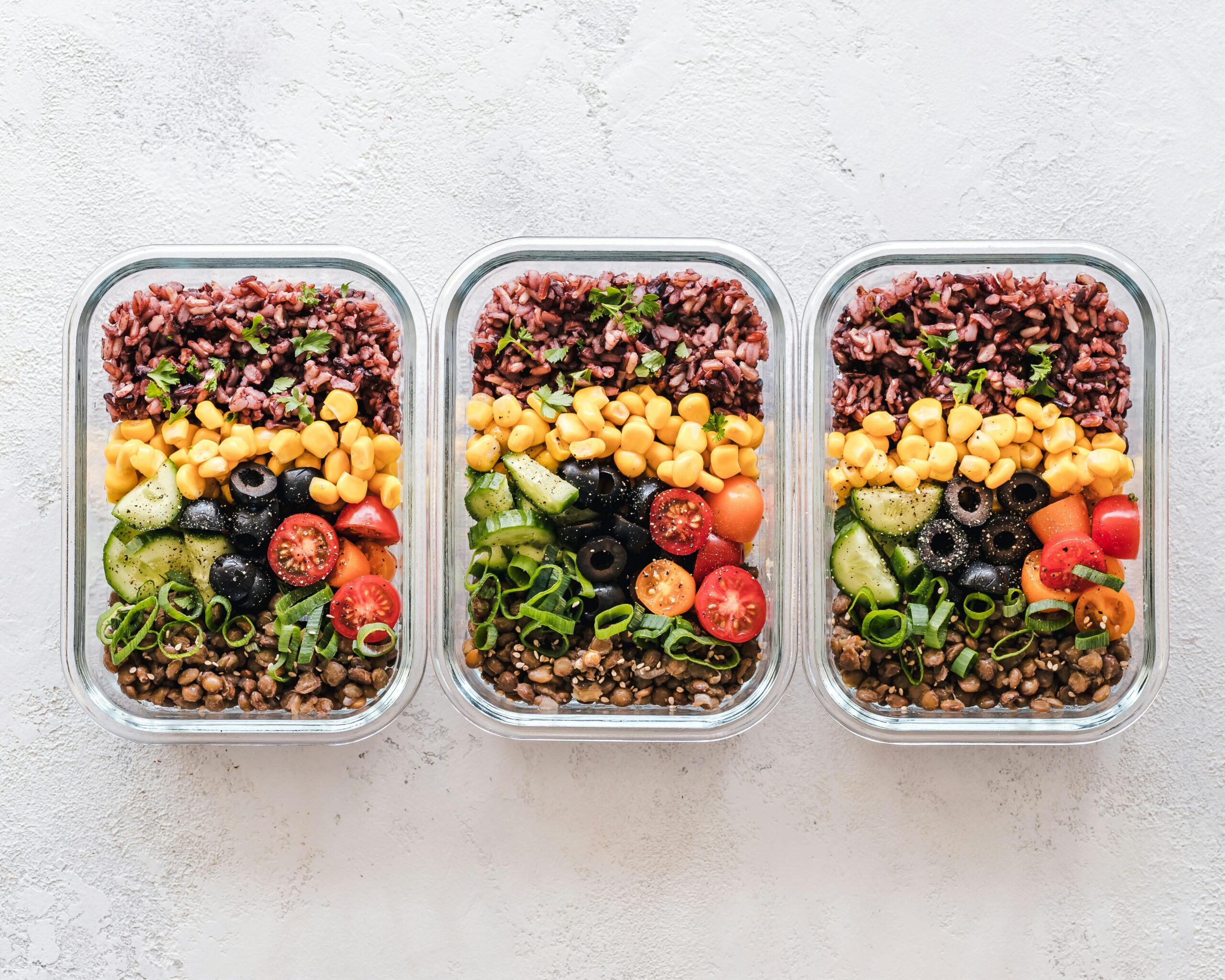
One easy way to simplify your weekly menu planning and meal prepping is to break down your meals into a system that consists of a variety of seasoning, protein, form and topping options.
- Seasonings:
- Diversify your spice rack: Invest in a variety of seasonings and spices. Common options include salt, pepper, garlic powder, onion powder, paprika, cumin, oregano, and thyme.
- Create spice blends: Mix your favorite spices together to make versatile seasoning blends. For example, you can prepare a “Taco Seasoning” blend with chili powder, cumin, and paprika for Mexican-inspired dishes or a “Italian Herb” blend with oregano, basil, and garlic for Italian cuisine.
- Label and store: Ensure your spices are clearly labeled and stored in a cool, dark place to maintain their freshness and flavor.
- Proteins:
- Plan variety: Incorporate a range of proteins into your meal prep to keep things interesting. Options include chicken, beef, pork, tofu, tempeh, fish, and legumes (beans and lentils).
- Cook in bulk: Prepare larger portions of protein, season them according to your meal plan, and store them in meal-sized containers. This can save time during the week.
- Forms:
- Mix up your cooking methods: Roast, grill, pan-fry, slow cook, or boil your proteins to add variety to your meals.
- Consider ground options: Ground meats or plant-based alternatives are versatile and can be used in a variety of dishes like stir-fries, chili, or meatballs.
- Toppings and Add-ons:
- Fresh ingredients: Plan for fresh toppings and add-ons like chopped herbs, diced tomatoes, sliced avocado, or shredded cheese to add texture and flavor.
- Pre-cut vegetables: Keep pre-cut vegetables on hand for quick salads, stir-fries, or wraps.
- Homemade sauces and dressings: Make a few versatile sauces or dressings in advance and store them in small containers. Examples include a vinaigrette, tzatziki, or salsa.
- Organization:
- Plan your weekly menu: Determine your meals for the week ahead. For example, you might decide to make chicken stir-fry, beef tacos, and a vegetarian pasta dish.
- Batch cooking: Cook multiple servings of each protein and prepare base ingredients like rice, quinoa, or pasta.
- Assembly-style prep: Set up an assembly line to portion out proteins, forms, and toppings into separate containers.
- Storage:
- Use airtight containers: Invest in high-quality containers to keep your prepped meals fresh.
- Label containers: Clearly label containers with the dish name and date to ensure you use the oldest meals first.
- Time-Saving Tips:
- Prep a week in advance: Dedicate some time each week to plan, shop, and prepare your meals.
- Multitask: While proteins are cooking, chop vegetables, cook grains, and prepare your toppings.
By following this system, you can simplify your meal prep process and ensure you have a variety of delicious, well-seasoned, and balanced meals ready to enjoy throughout the week. It not only saves you time but also helps you maintain a healthier and more enjoyable diet.

A summary of options for easy reference:
Proteins
- Chicken
- Salmon
- Tofu
- Beef
- Pork
Form
- Sandwich
- Salad
- Rice Bowl
- Taco
- Pasta
- Wrap
Toppings/Extras
- Pre-made Store Bought Sauces
- Fresh Herbs
- Pickled Veggies
- Fresh or Steamed Veggies
- Chili Oil
- Salsa
- Salad Dressing
- Yogurt
(Find a list of some great seasoning combinations for marinating, grilling or baking below.)


COMMENTS